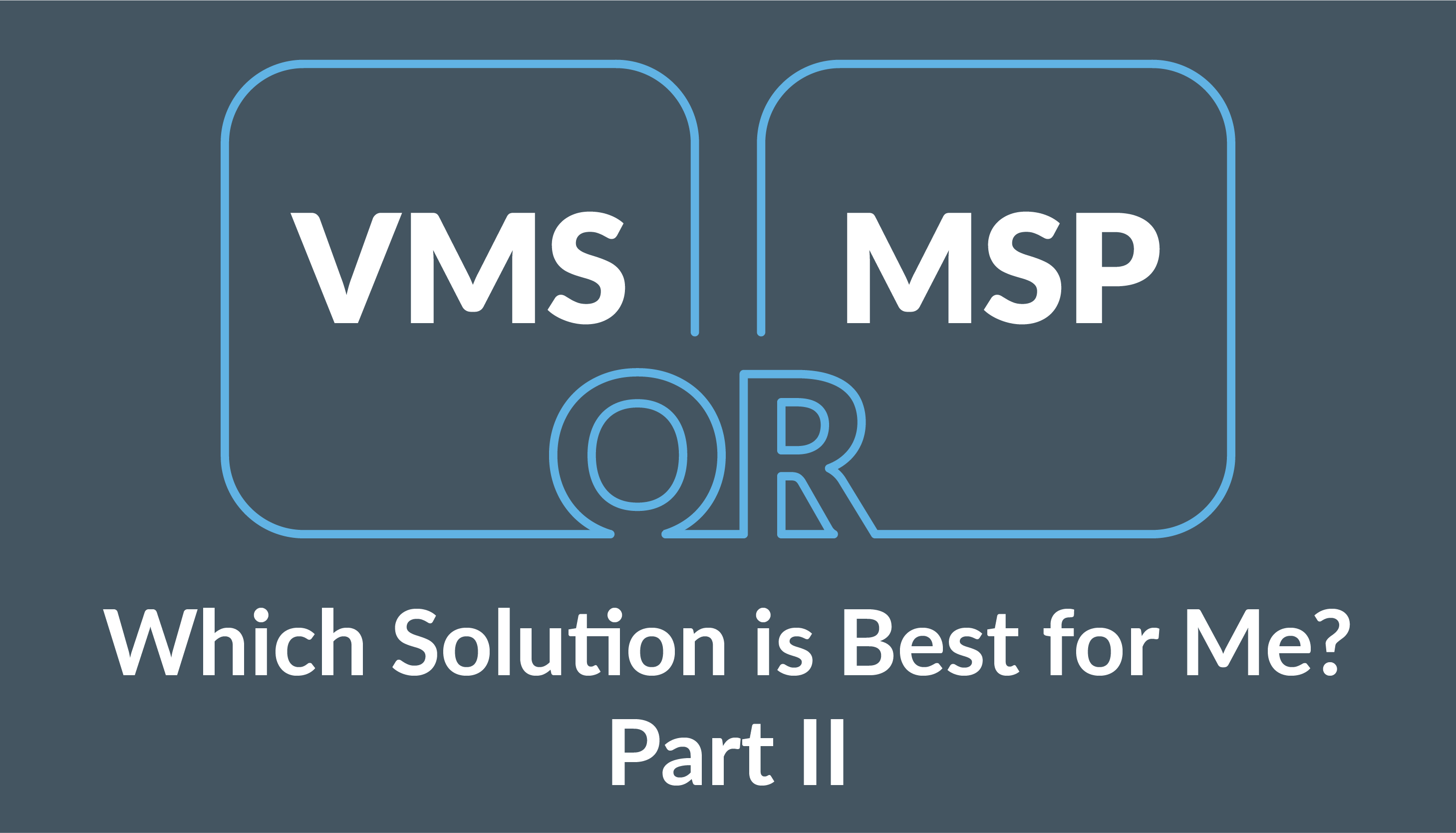VMS? MSP? Which Solution is Best for Me? Part Two of a Three Part Series | Should I Deploy an MSP?

In part I, we examined how to determine whether your company/organization is a good candidate for a VMS solution. This installment will take a similar look at whether your company is a good match for a Managed Service Provider for contingent workforce management. Here are a number of crucial questions to ask about your existing operations before deciding to deploy an MSP solution.
An often overlooked but critical question to ask of any organization considering an MSP solution for contingent workforce management is, “Do you truly have a well-conceived contingent workforce management policy in effect?”. It is often a good idea to craft contingent workforce management policies that work in alignment with your organization’s full-time talent acquisition plan and hiring strategy. Otherwise an MSP might operate at odds with your HR department and that is a recipe for failure. Having a policy in place improves the probability of success with an MSP solution.
Next ask if contingent labor is being used strategically or in an ad-hoc manner? This is important because if it is the former, it may be sufficient to simply “lift and shift” your existing contingent labor management processes over to a new MSP partner. If it is the latter, then it may require more significant re-engineering of workforce management processes so that the organization derives the maximum benefit from application of an MSP to the tasks associated with sourcing and managing a contingent workforce. For the majority of organizations opting to engage MSP solutions, re-engineering of processes in almost always the better option. But this level of change requires a willingness to embrace change, so reflect on your company’s relative strength or weakness in this area before making the decision.
Then consider how effectively your organization balances access to talent versus cost savings. In answering this question, the organization should look to its top three or four strategic drivers to determine which consideration should be the priority. You don’t want to be hashing this issue out during implementation. You and your MSP partner should clearly identify and understand the drivers at play so that the program can bring rapid impact, with clearly enunciated priorities.
For example, in the banking industry, there’s a metric referred to as the “efficiency ratio” which is used to gauge a bank’s profitability. For a banking organization seeking to improve its efficiency ratio, the decision to engage a contingent workforce program will likely be driven by hard cost savings versus speed of access to talent. Whereas for an IT services company, where talent availability is tightly constrained, the balance may lean away from cost savings as the key driver in favor of more timely access to talent in order to retain their competitive advantage. Understanding the balance within your organization is key to finding the MSP provider best suited to help achieve the goal.
Lastly, remember that culture matters! Making the decision of whether to essentially outsource the contingent workforce sourcing process will rely heavily on whether or not such activity is aligned well with the company culture. For those organizations whose culture emphasizes tight integration between hiring managers and their sourcing channels, relinquishing some control to an MSP might cut against the cultural grain and become counterproductive.
So now you’ve learned what to ask when considering a VMS solution and when considering an MSP solution too. In the third installment of this series, we’ll focus on another frequently asked question: which to do first—VMS or MSP?
Part III of this series examines how to determine if your organization is a good candidate for an MSP solution.
To read more on this subject, turn to nextSource for expert guidance and visit our Managed Service Provider page.
“